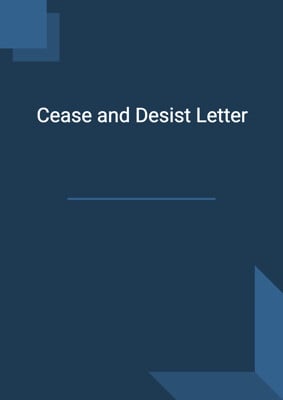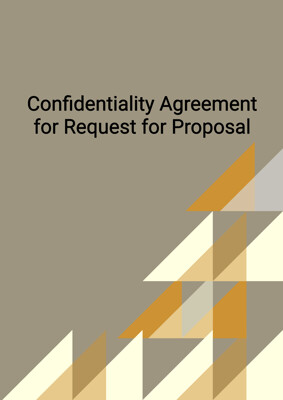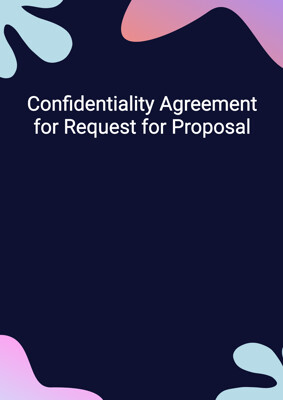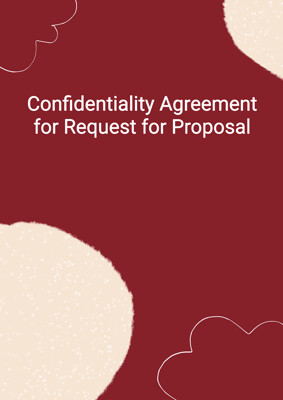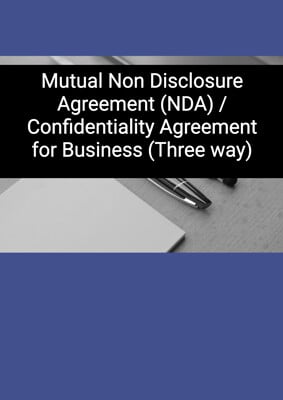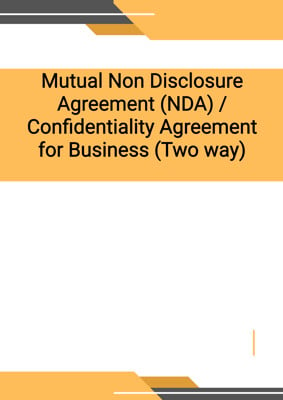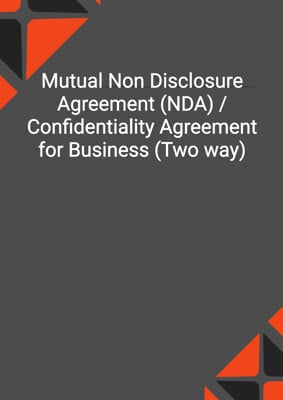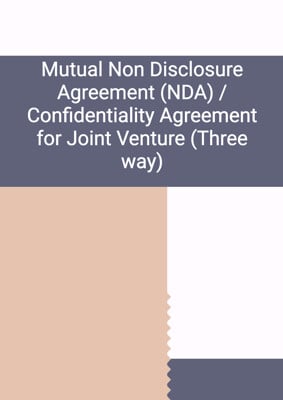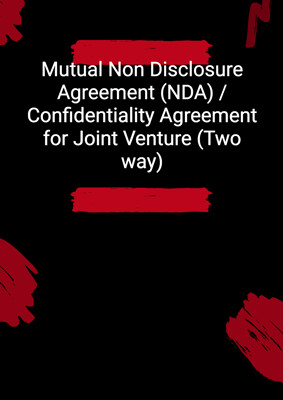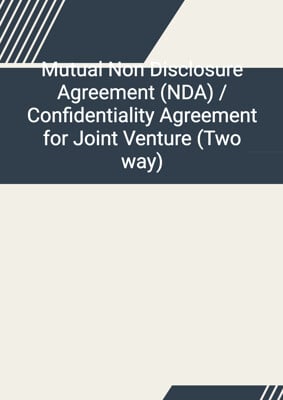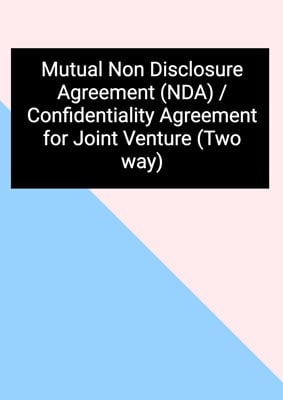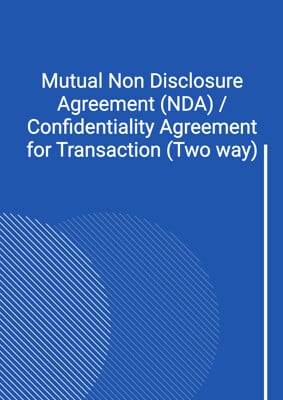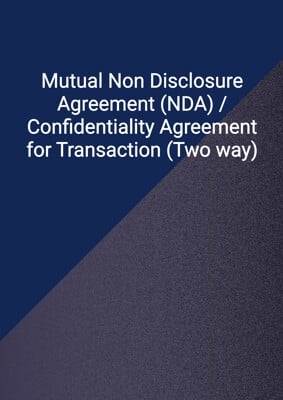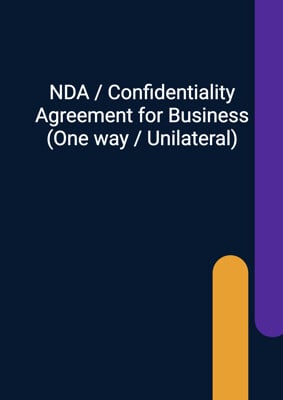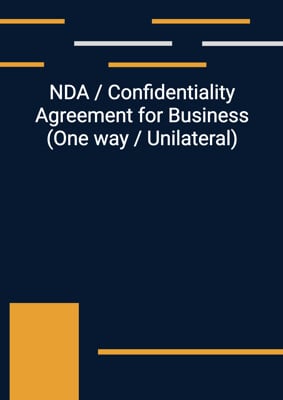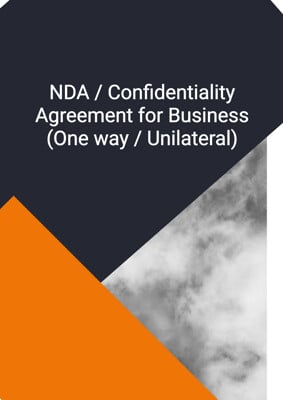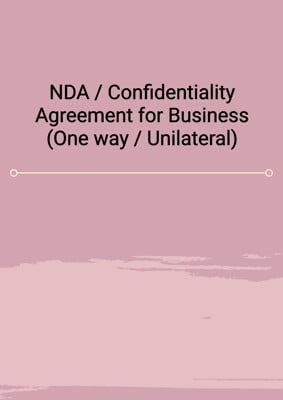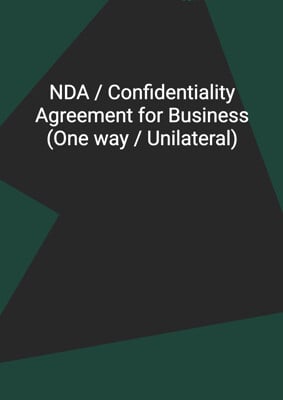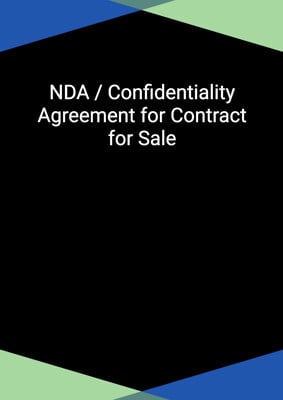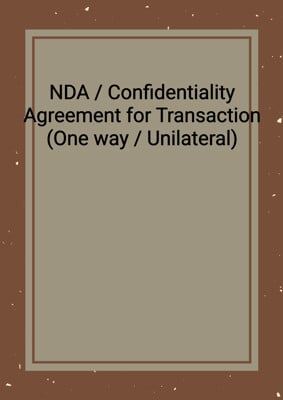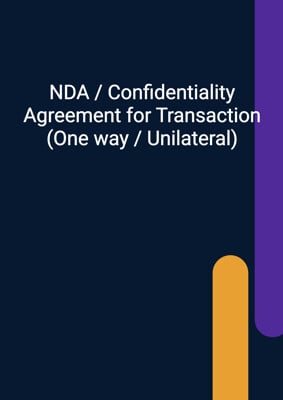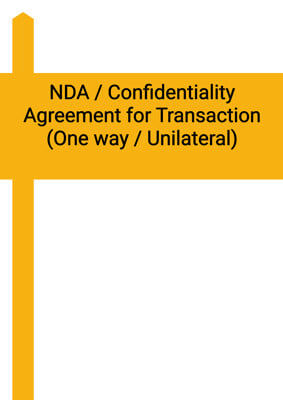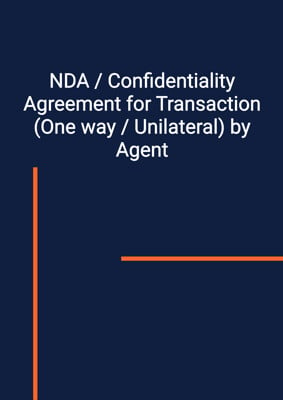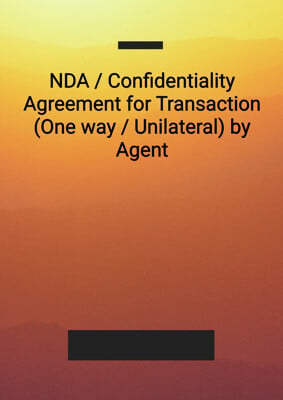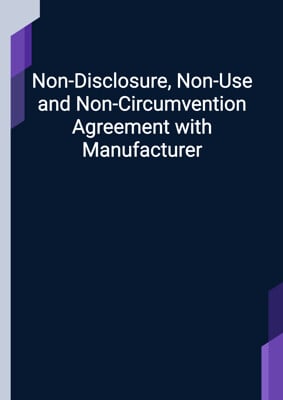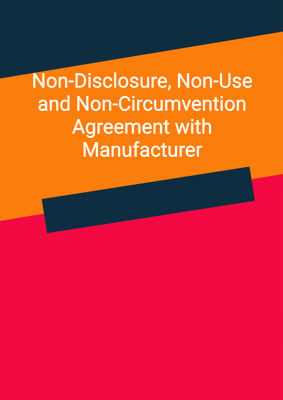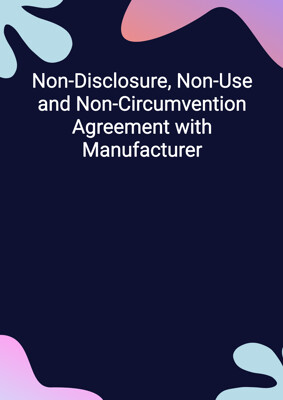
Mutual Non Disclosure Agreement (NDA) / Confidentiality Agreement for Business (Three way)
Strict / Tight
Three way Non Disclosure agreement for discussion of business relationship. It imposes a mutual obligation of confidentiality on the parties who provide and receive information at the same time. This form imposes stricter / tighter obligations on the parties.
How to Tailor the Document for Your Need?
01
Create Document
Fill in the details of the parties. You can click the "Fill with Member’s Information" button to complete it with information saved to your account.
02
Fill Information
Please fill in any additional information by following the step-by-step guide on the left hand side of the preview document and click the "Next" button.
03
Get Document
When you are done, click the "Get Document" button and you can download the document in Word or PDF format.
04
Review Document
Please get all parties to review the document carefully and make any final modifications to ensure that the details are correct before signing the document.
Document Preview
Document Description
The Mutual Non-Disclosure Agreement (NDA) / Confidentiality Agreement for Business (Three way) is an important document that establishes the terms and conditions for the exchange of proprietary information between three parties. The document begins with a brief introduction, highlighting the purpose of the agreement and the mutual benefit it provides to the parties involved. It then proceeds to define key terms and expressions used throughout the agreement.
The obligations of confidentiality are outlined in Section 2, which emphasizes the importance of maintaining the confidentiality of the information exchanged. Each party agrees to use the information exclusively for the purpose stated in the agreement and not to disclose it to any third party without prior written approval. The section also addresses the copying, reproduction, and storage of the information, ensuring that it is protected from unauthorized use or disclosure.
Section 3 focuses on the confidentiality measures that each party must take to safeguard the disclosed information. These measures include restricting access to approved representatives who have been authorized in writing, keeping the information separate from other documents and records, applying adequate security measures, and maintaining a written record of the information received.
The agreement also includes provisions for excepted information in Section 4, which outlines specific circumstances where the obligations of confidentiality do not apply. These exceptions include information that is publicly available, previously known to the receiving party, or disclosed by a third party with the right to do so.
Section 5 addresses the return of information, stating that each party must return or destroy all documents and materials containing the information upon request. It also clarifies that the obligations of confidentiality continue even after the completion of the purpose or the return of the information.
The disclaimer and warranty in Section 6 highlight that the information provided in the agreement is not all-inclusive and that no representation or warranty is made regarding its accuracy or completeness. The parties acknowledge that they have no liability for the use of the information by the other party and that this agreement does not obligate them to enter into a business relationship.
Confidentiality is further emphasized in Section 7, which requires both parties to keep the existence and nature of the agreement confidential. Any announcement or circular related to the agreement must be approved by both parties.
The remedies section (Section 8) acknowledges that damages would not be an adequate remedy for a breach of the agreement and allows the disclosing party to seek injunction, specific performance, and other equitable relief. The receiving party is also required to indemnify the disclosing party for any loss or harm resulting from a breach.
Other sections of the agreement cover waiver, assignment, entire agreement, intellectual property rights, governing law and jurisdiction, notices and service, and the exclusion of rights for third parties.
Overall, this detailed agreement provides a comprehensive framework for the exchange of confidential information and ensures that all parties understand their obligations and responsibilities.
How to use this document?
To use the Mutual Non-Disclosure Agreement (NDA) / Confidentiality Agreement for Business (Three way), follow these steps:
1. Review the agreement: Familiarize yourself with the entire agreement to understand its purpose and the obligations it imposes on all parties involved.
2. Enter party information: Fill in the names and principal places of business for each party involved in the agreement. This ensures that all parties are clearly identified.
3. Define the information: Determine the specific information that will be considered confidential and subject to the agreement. This may include discoveries, ideas, concepts, designs, specifications, and other technical or commercial information.
4. Understand the purpose: Clearly define the purpose of exchanging the confidential information. This could be for the evaluation or establishment of a business relationship.
5. Maintain confidentiality: Take measures to ensure the confidentiality of the disclosed information. This includes restricting access to approved representatives, keeping the information separate, applying security measures, and keeping a written record of the information.
6. Return or destroy information: Upon request, return or destroy all documents and materials containing the confidential information. Ensure that any stored information in computer systems is also secured and removed.
7. Comply with exceptions: Be aware of the exceptions to the confidentiality obligations, such as information that is publicly available or previously known to the receiving party.
8. Seek legal advice if necessary: If you have any questions or concerns about the agreement, consult with a legal professional to ensure that you fully understand its implications.
Remember, this guidance is intended for informational purposes only and should not be considered legal advice. It is important to consult with a qualified attorney to address specific legal concerns and ensure compliance with applicable laws and regulations.
Not the right document?
Don’t worry, we have thousands of documents for you to choose from:
